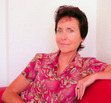Germaine Shames's Blog: Germaine Shames' Blog, page 4
October 30, 2012
A Love Letter to Readers
I may not know you personally, but chances are we have “met” through our shared love of books. You know me in a way few friends ever will: through my stories and my characters, through
 the themes with which I grapple book after book, through my running “lover’s quarrel” with language and the prose that somehow flows from it.
the themes with which I grapple book after book, through my running “lover’s quarrel” with language and the prose that somehow flows from it.You are the reason I write, the invisible presence that keeps me company as I face the blank computer screen. I catch glimpses of you in libraries, bookstores and trains. I read over your shoulder.
 You accompany me on journeys beyond the page, into the hearts and minds of people we may never meet face-to-face but whose hopes and fears mirror our own. This takes empathy. You suspend judgment long enough to allow me to spin my tale. This takes generosity. You absorb tens of thousands of words to follow a story to its resolution. This takes time and effort that is seldom acknowledged.
You accompany me on journeys beyond the page, into the hearts and minds of people we may never meet face-to-face but whose hopes and fears mirror our own. This takes empathy. You suspend judgment long enough to allow me to spin my tale. This takes generosity. You absorb tens of thousands of words to follow a story to its resolution. This takes time and effort that is seldom acknowledged.Reading is not passive. You fill in what I leave out; you probe, interpret, challenge, feel and forgive. Occasionally, you leave a comment or review so insightful it reminds me why I chose to become a writer, and why I persist despite all.
Thank you for every moment you devote to books. Thank you for your concentration, discernment and selfless tenacity. Thank you for reading.
Love,
Germaine
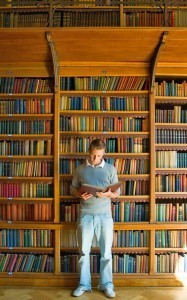



October 10, 2012
Born to Dance
Ursula Verduzco has not had the glamorous career she dreamed of as a little girl. An artist of tremendous heart, she has nonetheless triumphed as a dancer, choreographer, 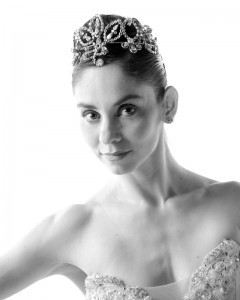 entrepreneur and patron of the arts.
entrepreneur and patron of the arts.
Ursula Verduzco trained at Ballet Austin Academy and the Joffrey Ballet School in New York City with full scholarship. Since graduating, she has danced with numerous companies including Staten Island Ballet, Benjamin Briones Ballet, New York City Opera, Eglevsky Ballet, Ajkun Ballet Theatre, Connecticut Ballet, New York Dance Theatre, Ad Hoc Ballet, and Ballet Neo among others. As the founder and director of the Latin Choreographers Festival, she has made a mission of supporting and presenting the work of talented Latin choreographers in NYC.
Welcome Ursula!
You are the daughter of artists, your father a singer, and mother an actress. What was it like to grow up in the rarefied atmosphere of the Performing Arts? Why did you choose to focus on dance rather than on singing or acting?
Yes, my family is a family of artists. Even my brother, who is now a pilot and English teacher, was involved in the arts when he was a child. We were a very unique family, and growing up in that environment was amazing and very fulfilling. I remember my house being always full of music, my father always playing the guitar—he is a singer but also a composer, musician and actor. Curled-up in bed beside him while he was rehearsing his work was just the most peaceful place I could find in my little world. I would fall asleep to the sound of his voice and guitar and wake up with his music in my ear… still now it moves me to tears to hear him sing and play, first because it is all just too beautiful, and second because, since he lives in Mexico, I miss him so very much.
My mom was an incredible influence on me. I believe she was the one who took me to my first ballet class when I was very little. Although I was only 4 years old, I still remember how amazing I used to feel when getting to the studio, and how much that first experience changed my life forever! My mom is a beautiful actress and I remember feeling so proud of her when I would go see her perform. She used to coach me and prepare me when I was acting and we had so much fun at it.
I have always been inclined to like music and acting, and even after acting for some years in my childhood on TV and in theatre and having a blast at it, I could not ignore the power and freedom my whole being felt when I was able to move to music. Even now after so many years of my career, I still feel this is the only thing I really want to live by doing.
You were born in Mexico and trained there from the age of four. You came to the United States for a summer course in 1993 and returned two years later to live. How has the move enabled you to grow as a dancer—and at what cost?
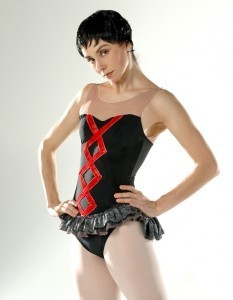 Moving to the United States was the best decision I made. It really changed my future and the possibilities that I have been able to enjoy.
Moving to the United States was the best decision I made. It really changed my future and the possibilities that I have been able to enjoy.
Living in the ‘Capital of Dance’ has just been amazing; working with so many talented people and being close to the best dance in the world makes you push for the best in yourself. The standard is just so high and even when getting to the top has to do not only with talent, but perseverance, professionalism and luck, when you are surrounded by the best and you aspire to that, your personal best will surface and it is amazing how much fulfillment you can get from it.
The cost of coming to New York for me has really just been the fact that my family is back in Mexico and I don’t see them very often. Since I arrived here I have been able to relate and mesh with this place in a way that I never really felt I wanted to go back; this is home to me now ( because what I love to do the most is here and I have a place doing it ). I miss the traditions of my country, but I miss my family the most. Sometimes I wish I could just go visit my mom, dad or brother in an instant and enjoy some dinner with them or go see a performance together. Lately, they have been able to come to visit me more often and that feels great!
In 2008 you founded the Latin Choreographers Festival, an annual event showcasing works by both veterans and newcomers. By any measure, this is an ambitious undertaking and enormous investment of time and energy. Five years on, what do you feel has been achieved through the Festival? Is such an event more necessary or less necessary in 2012 than it was when you started?
Yes, it is an ambitious undertaking and I have had an amazing time creating and growing this Festival. We have had, as of this year, about 50 choreographers and more than 80 dancers be part of the Festival. This year, the 5th Anniversary, we were able to give the opportunity to 16 choreographers and we had 2 different programs. It was a wild and exciting season. I believe the most important thing that has been achieved is the fact that now Latin choreographers have a place to go, a place to call home, a place where they know their work and their vision will be presented, respected, produced, promoted… in an environment that empowers who they are, where they come from, and where they want to go.
And hopefully as the years pass, more and more choreographers will know about it. I have had applications come from so many places: Mexico, Argentina, España, Brazil, Ecuador, Peru, of course USA and so many other countries. This is very exciting to me because it says how much it was needed and how many Latin choreographers exist in this world that can potentially be a strong force in the dance world.
It is surely necessary to keep the Latin Choreographers Festival going, and growing! in that way more and more choreographers can be supported and empowered for who we are as individuals and also for our background. I am not just interested in supporting our Latin community but also the work of everybody, which is why I have also opened the Festival to any choreographer of any nationality to apply as guests. This way we can share and enjoy our cultural differences united by our common language—dance.
More recently, you co-founded the Mid Pointe Project, an initiative to help professional and retired dancers create new works and take their careers to a new level. Its slogan—United Beyond Dance—speaks volumes. What can dancers achieve as a group that they cannot do individually? How far have you come in realizing Mid Pointe’s mission?
Mid Pointe Project is a collaboration between Brian Norris, former Artistic Director of Grandiva Ballet and now Director of Men on Pointe, Benjamin Briones, Artistic Director 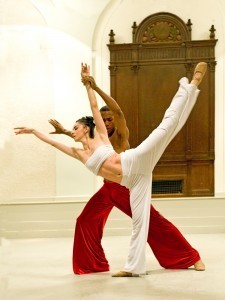 of Benjamin Briones Ballet, and myself. We started this project wanting to help each other produce a performance where our choreography could be featured and the development of the mission of the project started growing from there.
of Benjamin Briones Ballet, and myself. We started this project wanting to help each other produce a performance where our choreography could be featured and the development of the mission of the project started growing from there.
I believe in collaboration and creating opportunities for myself and for others. That has been my commitment in the last years.
We as dancers are powerful creative beings and, unfortunately, are used to having opportunities handed to us; that is the culture of dance. Directors hire you and choreographers choose you to be a part of what we love to do, and in so many cases we could make ourselves be and feel not so powerful. I love the culture of dance in any style, I believe in the hierarchy of a company and in being selected, but I also believe we as dancers have an immense responsibility to continue creating our own future and the future of the next generations.
The perfect situation as a dancer for myself would be dance with a company or companies and at the same time have my own projects—can you imagine how fulfilling and how interesting a life that would be?
Lately, because of so many situations in my life, I have had the opportunity to experience moving in different ways and it is beautiful to see how much fuller my life is becoming because of it. We all have so much to give and so much talent; combining all those talents, the world of dance can reach farther and with more strength.
I was sorry to read that you suffered an ankle injury from which you are still recuperating. You have been quoted as saying, “It has been a challenging and an amazing experience to go through this. Believe me, at this point I am glad it happened to me.” How so?
This Sunday October 7th will be a year since my surgery, yes, it has been a challenging experience and also an amazing one. I have been very lucky to not have had any major injuries in my career until this time and also very lucky to have had an amazing group of people helping me go through it all, from the Harkness Center for Dance Injuries and Dr. Rose who performed my surgery and Erika Kalkan my Physical Therapist, my boyfriend, friends and family… a support group is always so important. It took me by surprise to see how hard it is to deal with your mind and your body when you are dealing with an injury that requires surgery and the recuperation time and the expectations. I am happy to say that my foot is good!!! It has taken some time but I am sure that is what my body needed—time.
I am happy I had to go through it and don’t have any regrets because it has taught me so much as a person and as a dancer.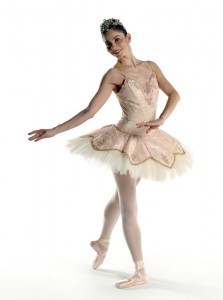
Our career is so short compared with others and we concentrate so much on “achieving” and “becoming” that life passes by sometimes without our noticing and being aware of what we have already achieved and become, what we could have been enjoying already when we are still concentrating and obsessing about being better and more. There is a REALITY in dance, we have to work hard, with discipline and commitment to become first a dancer and then a successful dancer, but that should not take us away from noticing along the way our achievements and the enjoyment that our dance life gives us. I have been a very lucky lady and I consider myself successful in the sense that I live my life doing what I love! How many people in this world can say that? And on top of that I was given the opportunity to learn through hardship and cross over to the other side mentally stronger. I can’t wait to see where all of this takes me, I can’t wait to enjoy with all my attention and being present what lies ahead. There is so much to dance.
By most people’s standards you have not had a dream career, in the sense that opportunities have not come easily. Yet you, more than most dancers, have created opportunities—not only for yourself but for others. How has your life in dance turned out differently from what you might have imagined as a young ballerina in training? What advice would you give a young person who aspires to become a professional dancer?
When I was little I had the dream of becoming a beautiful ballerina, dancing for a major company and being very successful at it. This dream kept me going through so many years and through so many obstacles, and I cherish this memory because, thanks to it, I had the power and commitment to become a classical dancer. As time kept passing by and my professional career started, I made choices along the way that shaped the way my career would be. Wanting to stay in New York was a big decision that took me into the world of a freelance dancer. It is a path where there is no security since you don’t know where your next paycheck will be coming from, but it is also a life of interesting projects and so many different opportunities. That is probably where my need to create opportunities for myself and others surely was born.
The advice I would give to a young person who aspires to become professional is very simple to me: first, educate yourself. Look for the information. There is so much to learn; don’t wait for it to be given to you. Take charge of your life and future. Invest in yourself.
Be humble, listen and learn; without humility you will only get so far. Be respectful of your fellow dancers, teachers, directors, choreographers, stage crew… everybody! Because that is the best way to be and because you never know who will be your next opportunity.
Enjoy the ride. Believe in yourself, read, listen to music, go to performances to learn from the pros and meet people.
Respect your body; take care of it early so it pays you back later.
And dance your heart out every time!
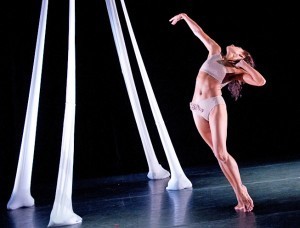 Have you dreams still to realize? What lies ahead for Ursula Verduzco?
Have you dreams still to realize? What lies ahead for Ursula Verduzco?
I am excited to be performing again. This weekend I am performing a solo with Benjamin Briones Ballet, a new company in the making with beautiful dancers and talented choreographers on the roster. I am so thankful to Benjamin Briones, Artistic Director, for this, my comeback opportunity.
I also very recently premiered a new choreography that was commissioned by Nomad Contemporary Ballet (Kristen McGrew- Artistic Director). I am also very thankful for her belief in me and for the opportunity.
There are so many dreams still to be fulfilled and I am happy to keep dreaming. I started choreographing in 2009, am having a blast with it, and looking forward to more of that.
But mostly, as a dancer, I am so interested in feeling in my body the movement of different choreographers, their voices and their styles. I hope to have the opportunity to be transported to wherever they need me to go in their pieces; being an instrument for expression, movement and communication is my only drug of choice.
While it feels wonderful to be performing again, it is also nerve-racking in an amazing way: the energy that goes through me, the tiredness I feel after rehearsal, the soreness in my body, the unexpected in every movement, the twitches in my muscles as I sleep, the need to express myself by moving… Life is good when I dance through it.
To learn more about Ursula: http://www.ursulaverduzco.com/
More about the Latin Choreographer’s Festival: www.LatinChoreographersFestival.com
Photos courtesy of Rachel Neville.

September 25, 2012
Life as Art
Barbara Conelli on All Things Dolce
Who hasn’t dreamed of living la dolce vita in some achingly quaint corner of Italy? Italophile Barbara Conelli is one of those rare “artists of life” with a knack for finding sweetness wherever she goes.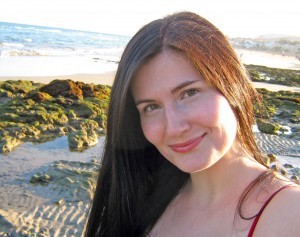
A bestselling author, seasoned travel writer specializing in Italy, and acclaimed radio hostess, Barb is a born nomad and globetrotter fluent in eight languages. Blessed with preternatural enthusiasm and stamina, she loves sharing her travel adventures with her readers and listeners. In her delightful Chique travel books filled with Italian passion, Barb invites women to explore Italy from the comfort of their home with elegance, grace and style, encouraging them to live their dolce vita no matter where they are in the world. Welcome, Barb!
Your new book, Chique Secrets of Dolce Amore, is cresting the heights at Amazon. I must admit that I began the book expecting titillating vignettes of love and romance, Italian style. But you approach dolce amore quite differently. What is your new book about?
It is about love of life, and about falling in love with the daily, ordinary, yet unique and magical life, which is the art that Italians have mastered. In Chique Secrets of Dolce Amore, the city of Milan becomes your lover who invites you to dance the eternal dance of secret corners, intoxicating smells and beautiful sights. You become the star of its streets, discovering its most magical mysteries: the gardens, the houses, the food, the artists, the people and their stories. Milan is the city where you can dream your big dreams and the city that makes them come true for you. And my intention is to take my readers with me and guide them through this marvelous, wondrous city adventure. Chique Secrets of Dolce Amore is a travel book with a chique twist.
How did your love affair with Milan begin? What fires and sustains it?
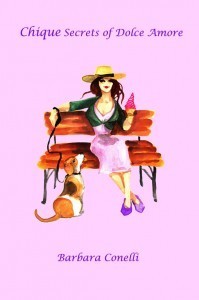 My Grandma Lily was born in Milan, and although my family is multicultural, the Italian influence has always been dominant. Grandma taught me to love the language, the people, the sunshine and the sea breeze, the traditions and the quirks. Milan became my home away from home, and although I love Italy as a whole, Milan has a special place in my heart. As I say in my previous book, Chique Secrets of Dolce Vita: “My repeated encounters with Milan are ardent, thrilling, exciting, and unique every single time. Its streets are full of old loves, present loves, and the expectation of future loves. In its shadows there is laughter, joy, delight, and emotion. Its embrace is passionate and its kisses are endless. Milan is a sensual lover, a devoted friend, and a loving family. It is a city that gives all that is new and good, and takes away all that is old and bad. To put it simply, it is my city. A city where I am always different, yet each time myself, always the same, and yet each time newborn.”
My Grandma Lily was born in Milan, and although my family is multicultural, the Italian influence has always been dominant. Grandma taught me to love the language, the people, the sunshine and the sea breeze, the traditions and the quirks. Milan became my home away from home, and although I love Italy as a whole, Milan has a special place in my heart. As I say in my previous book, Chique Secrets of Dolce Vita: “My repeated encounters with Milan are ardent, thrilling, exciting, and unique every single time. Its streets are full of old loves, present loves, and the expectation of future loves. In its shadows there is laughter, joy, delight, and emotion. Its embrace is passionate and its kisses are endless. Milan is a sensual lover, a devoted friend, and a loving family. It is a city that gives all that is new and good, and takes away all that is old and bad. To put it simply, it is my city. A city where I am always different, yet each time myself, always the same, and yet each time newborn.”
You divide your time between New York and Milan. Does New York inspire passions of its own—and if so, have you written about them? What do you see as the advantages of living a double life?
I love New York – and coincidentally, Milan and New York share more than you’d think. Milan has always looked up to New York (as well as to London and Paris) in many ways, like a brash disciple striving to surpass the master. Milan is an adorable brat you can’t help falling in love with; it is creative, open-minded, free-spirited, laid-back, yet ambitious and hard working—just like New York. It’s funny you should ask me about New York-inspired writing. The last chapter of Chique Secrets of Dolce Amore has an open ending, leaving the author on the plane to New York with a mysterious Manhattan date ahead that started in Milan. I’m very tempted to continue the story in New York and show the city through my Italian eyes.
You were kind enough to interview me on your Chique radio show. How did you decide to become a talk show hostess, and how does this role fit within the larger framework of your life as a globetrotter, writer and Italophile?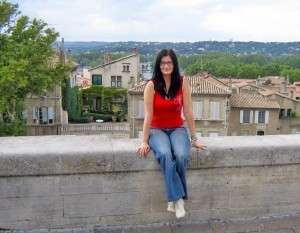
I founded Chique Show before my first Chique travel book was published, with no specific goal in mind. At the beginning, it was just something I enjoyed doing and another platform to spread the word about my books. Somehow (as it usually happens when you do something just for fun), it started to grow and has been growing ever since. Today we have more than ten thousand listeners, and I’m getting ready to re-launch the show as a fully professional, branded show, maybe even network. I’ve met so many wonderful people through the radio and have made so many precious friends. Chique Show has been an amazing connector, and a source of great fun and joy.
You reviewed my novel You, Fascinating You, much of which takes place in Milan. My protagonist dreamed of dancing at the world-famous opera house, La Scala. You, too, have entertained fantasies regarding La Scala—and realized them, to some extent. Care to share?
I have two stories about La Scala in my books, one in Chique Secrets of Dolce Vita, and one in Chique Secrets of Dolce Amore. La Scala is a magical place, and it has played a magical role in my life. My personal experiences with the theater are enchanting and miraculous. And one of them has a lot to do with my passion for dance. I love dancing; I love learning it, I love doing it, and in many ways, dance is a powerful metaphor that expresses the beauty of life. I always tell my readers to dance with life and enjoy every step. I’m a big fan and admirer of ballet. I used to think that ballet was only for those extraordinarily talented, fragile nymphs who danced before they learned to walk, but I was wrong. In Milan, I had a chance to take ballet classes with Annamaria Bruno and her daughter Liliana. Annamaria, a famous prima ballerina who started her career at La Scala and danced on leading European stages, founded the very first Milanese private ballet school for talented children, and fortunately for me, also for not-so-talented adult women who long to become ballerinas at least for one day. They made my childhood dream come true. I still do ballet at home every now and then, enjoying the lovely basics they taught me. Being able to close your eyes, do a pirouette and for a little while imagine the passionate applause at La Scala is exciting, romantic, and it gets me every single time.
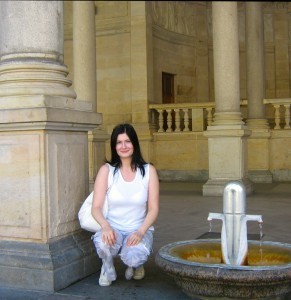 Some people seem to live larger than others, to pack more enjoyment into their days, to savor what others miss. You are such a person. Is this a congenital condition or a discipline? Can anyone live a life of dolce amore?
Some people seem to live larger than others, to pack more enjoyment into their days, to savor what others miss. You are such a person. Is this a congenital condition or a discipline? Can anyone live a life of dolce amore?
My Dad was an incurable optimist and bon vivant. My Mum is an incurable pessimist and closet dreamer. They had a very happy marriage and a daughter who got the best and the worst of both worlds, pondered them respectfully, and then decided to bow out of the drama and do it her way. My parents raised me to love faraway journeys, gave me an open mind to discover new worlds, and taught me to respect the people who create these worlds. They also gave me the freedom to create my own adventure, courageously and fearlessly, and that’s what I do. I’m grateful for all the challenges, obstacles, tears and pains I have experienced in my life, because thanks to them I’m wiser and stronger. I believe that life is magical and unlimited, and you can truly do, be and have everything you desire: that’s why you were born. Every morning I wake up and give thanks for the gift of yet another day, yet another breath, yet another ray of light, yet another chance to love, laugh, see, explore, learn and understand. I am stubbornly happy and I refuse to change that (and yes, it does get on other people’s nerves). I insist on making my dreams come true, all of them, every single day. It’s a very Italian way of life that’s quite easy to adopt once you understand that happiness is a choice that’s made every morning when you open your eyes and then every minute of your day. To me, life is not about the things you accumulate; it’s about the experiences you collect and the adventures you savor. It’s art. It’s a delicious dance. And it’s happening right now.
What is your idea of a perfect day? Where and how would you spend it?
To me, every day is perfect; it’s just that some days are more perfect than others. My perfect day actually starts with a good night’s sleep and plenty of time on my hands in the morning. I wake up early, do my morning yoga and meditation, and enjoy a long, sunlit walk with my beagle. We stop at my favorite café for a cup of cappuccino and a crispy croissant, and then we go home so that Mr. Brinkley can sleep and I can write. I have a peaceful lunch in my garden, take a nap, and then write some more, although I may also play a few rounds of golf instead. In the evening, I have dinner at my favorite restaurant with my closest friends, walk home enjoying the night vibe of the city, and read a good book before I fall asleep. This can happen in any of the cities that I love. Give me sunshine, beauty, good food and amazing people, and I’m a happy camper.
What is next for Barbara Conelli? Is there anything more you would like to share with our readers? 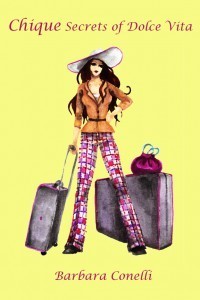
I’m writing my next Chique travel book about Rome, and I have also returned to my novel with the intention of finishing it—cross my heart! It’s been sitting on my desk for too long. I love travel writing because it allows me to observe and share real life, but I dabble in fiction and writing this novel is a dream whose time has come. As I’m answering your questions, I’m looking at my favorite Eleanor Roosevelt quote on my desk. She said: “You must do the thing you think you cannot do.” That’s what I live by. You have one life. Live it well. It’s worth it.
D’accordo!
Find out more about Barb and her books: http://www.barbaraconelli.com
Visit Barb’s blog: http://barbaraconelliblog.com
Chique Secrets of Dolce Amore: http://tinyurl.com/buydolceamore
Chique Secrets of Dolce Vita: http://tinyurl.com/buydolcevita

August 23, 2012
Dancing Through Upheaval
Amy Gould on the Desire to See Things Grow
Does place play a part in an artist’s development and ultimate success? Dancer, choreographer and entrepreneur Amy Gould, a South African resident in Cape Town, provides a compelling example of one artist driven to adapt and thrive through world-shaking upheaval and change.
Fellow of the Imperial Society of Teachers of Dance, owner of her fulltime ballet school, choreographer and 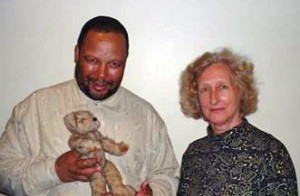 director of Dance Crew, owner-manager of Theatre On-Main and Editor of ImagineMag!, Amy seeds opportunity for herself and others. For three years she served on the Western Cape Cultural Commission on Arts and Culture. In 2007, she received the Western Cape Arts, Culture & Heritage Award for her contribution to the Performing Arts in the field of Dance.
director of Dance Crew, owner-manager of Theatre On-Main and Editor of ImagineMag!, Amy seeds opportunity for herself and others. For three years she served on the Western Cape Cultural Commission on Arts and Culture. In 2007, she received the Western Cape Arts, Culture & Heritage Award for her contribution to the Performing Arts in the field of Dance.
How Amy found time for the following interview, I can only marvel. Welcome!
What is the overarching motivation for this superhuman outpouring of artistic industry?
As with many entrepreneurs, necessity is the mother of invention. I do not know about this `superhuman’ adjective. One thing led to another, and then another… All are part of my interest in the arts and my desire to see things grow.
I realized early on that if I wanted to work as a choreographer I would probably have to develop a company to do so. This was the driving thought behind much of what I have done. There were not many options for dancers, let alone choreographers, to earn an income in this country.
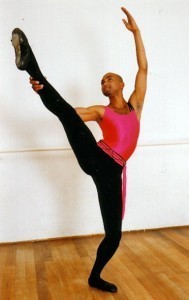 I started to teach in order to generate an income. I built the school to have a permanent and safe environment to work in. The company was formed to create work for the dancers and to choreograph original work. The training area converts into a theatre by means of curtains, lights, sound and all sorts of innovative ideas, like high chairs to create better sight lines. This was created so we could have a permanent performing venue for our productions. The arts magazine was started after I had served three years on the Cultural Commission to the local government. The arts community needs a voice and assistance in promoting and marketing their products and services; I thought I could help.
I started to teach in order to generate an income. I built the school to have a permanent and safe environment to work in. The company was formed to create work for the dancers and to choreograph original work. The training area converts into a theatre by means of curtains, lights, sound and all sorts of innovative ideas, like high chairs to create better sight lines. This was created so we could have a permanent performing venue for our productions. The arts magazine was started after I had served three years on the Cultural Commission to the local government. The arts community needs a voice and assistance in promoting and marketing their products and services; I thought I could help.
Quite a few years after having started teaching, I underwent spinal surgery and while lying still, a condition my body is unaccustomed to, the planning of the building of my own premises was started. I listed the things that were essential to make our working lives more conducive to what we were doing and to the long hours that we spent doing it. Using premises that were far from ideal for dancing, uncomfortable and often not available when needed, was, two years later, a thing of the past.
Incidentally, everyone told me I was mad, I was dreaming and would never be able to support it. I carried on anyway. When I told my family what I was going to do my mother said, `how much will it cost and how much do you have?’ My sister asked, `where will you build it?’ and my brother asked, ` how big?’ Obviously I come from a `can do’ family.
Dancers came to me from the rural areas. I would train one teacher and then she would send me some of her senior students, and so it would continue. One day I looked at my senior classes, many of the students already qualified or in the process of achieving their teaching qualification and thought, nobody attends ballet classes because they want to teach. They come because, deep down, they want to dance. The dancers and I discussed the situation and Dance Crew, a classical contemporary dance company, was started.
We set out to create work of our time and place in society that reflected what we were experiencing and subject matter with which ordinary people would identify. Because of our contacts in the rural areas, we chose to hone our skills, gain experience and introduce ballet and dance to many people who had never seen a stage production. Our subject matter ranged from Alcoholism to Power struggles, Aids, The Life Cycle of a Spider, Ancestors… to name a few. The latest one we have produced has to do with the changing seasons and how, here in Cape Town, we can experience four seasons in one day. Currently we are experimenting with integrated projections and images.
Some of the teachers I have trained have returned to their communities to teach and we are linked into them and now provide an infrastructure and platform for them to perform.
Where we find young people with talent and the desire to work hard, we assist them with bursaries. Sometimes we have funding, sometimes not, but we persevere.
Who or what first sparked your interest in ballet? At what point and under what circumstances did that interest crystallize into a vocation?
I come from a musical background and there was always music in our home. We children all received piano training at a young age. I do not know why I did not become a singer, as my father loved opera. On long car trips he had us singing phrases over and over again until they were note and pitch perfect. Today I still sing in my classes and I think it helps with musicality to be able to sing in phrases rather than only count by the beat or the bar. Ballet was taught at the school I attended, so I enrolled myself and then told my mother what I had done.
I have been most fortunate in always knowing what I wanted. I did not always get what I wanted, but the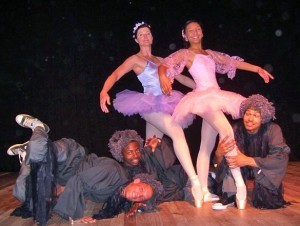 first step is always knowing what you want or need and then finding a way of achieving it.
first step is always knowing what you want or need and then finding a way of achieving it.
My love of music, hyperactivity and speed is what drove me to dance. Creating shapes and patterns with bodies is endlessly fascinating to me. I do not give in or give up, which is another quality for a dancer to have as there seem to be so many pitfalls and so much negativity expressed by people around you and you have to learn not to be put off by the gainsayers.
You have spoken out against the competiveness that permeates ballet training. What prompted you to voice these concerns? Given that places in the best dance companies are limited, as are the most desirable roles, how can competition be, if not avoided, made more constructive?
Competing to be better than another person is setting oneself up for failure. We have different bodies, brains and abilities. We can learn and benefit from each other without the necessity of constantly needing to outdo those around us. The dancer is constantly under criticism when in performance as regards body shape and technical ability. It can and does lead to enormous emotional fragility unless the dancer is developed to be mentally, as well as physically, strong enough to withstand such unsolicited criticism.
I work on highlighting the difference and the importance of that difference among dancers. We work to encourage and build the individual’s confidence while at the same time developing respect for other dancers’ ability.
Ballet has become very athletic, but it is not a sport; it is an art. Does one compare Solzhenitsyn to Enid Blyton, Picasso to Matisse, Wagner to Tchaikovsky?
Fit for purpose—I would like to see teachers, dancers, choreographers understand and define this term. Everything would then make more sense. If a company requires 20 dancers of the same height, similar body shape and stipulates the necessary technical requirements that their company choreography requires, everyone would understand that if you do not fit that profile you will not be eligible. It will have nothing to do with whether you are good or bad, simply not fit for purpose needed.
One of the greatest benefits that comes from good dance training is self-confidence and awareness of one’s own ability, whatever that might be. One needs to feel good to produce good work and if you have to constantly be looking over your shoulder to see who is better, that is destructive.
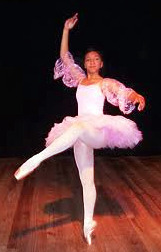 There are incredible acts of violence and corruption in this country and you see it in children from quite a young age. I think we need to develop a far more caring society that teaches people that, in order to succeed, one does not have to get rid of or ridicule the competition. For me, the finest and most productive competition is with oneself.
There are incredible acts of violence and corruption in this country and you see it in children from quite a young age. I think we need to develop a far more caring society that teaches people that, in order to succeed, one does not have to get rid of or ridicule the competition. For me, the finest and most productive competition is with oneself.
You mention`best companies and most desirable roles.’ Again, all of the above applies. Best for what or for whom?
Few countries have, in recent times, undergone such dramatic upheaval and reform as South Africa. Does this unique socio-political environment make particular demands on you as an artist and promoter of the Arts? What has Dance to contribute to the ongoing process of nation building and healing?
Reform? We have a democracy now and laws to uphold it, but it is people’s hearts and minds that are far harder to change. Ignorance as well as lack of knowledge and respect of other people’s culture, religion and way of life create barriers to communication on nearly every level. Inequality is still rife among the haves and the have-nots and this leads to much of the turmoil we experience.
Much was, and still is, made of race as the issue at the heart of matters in this country, but never underestimate the love of power and economic ascendancy as being the reason that so many atrocities happened and continue to happen in this and in many other countries. The love of power is extremely corrupting.
And are things better for everyone now? In some ways, possibly, but not to the extent that is needed. I think we have changed one set of greedy, power driven officials for another set equally greedy and power hungry. And that has nothing to do with race and everything to do with lack of integrity and sheer greed of certain individuals.
In our previous dispensation I did exactly what I am doing now because I chose the path of respecting people regardless of race, creed or color. But there were pitfalls and I paid a price. And I am still paying a price, because I am still going my own way. Not always a popular or accepted thing to do.
So much of funding, especially governmental funding, is dictated by whatever the current political policies are. If you are able to align your requirements or naturally comply with policy, odds are you will receive funding.
Nation building and healing! There are some things that no amount of time will ever heal. Pain and memory might fade, but heal? I don’t think so. So much damage was inflicted on so many it will take many generations to possibly overcome this. Nation building, I think, happens person-to-person, not with big massive events. When I watch the people in my school and company, I see natural friendships being forged through mutual interests and mutual understanding. Somehow we are creating an inclusive community. Recently one of my Moms of color commented,`You know Amy, although you are so white you really are one of us.’ And from a Black woman: ‘Amy, I think you must have some black blood, you think like a black person.’
There are a number of dance companies in South Africa doing wonderful work bringing people together through dance.
In our current climate crime is one of the most critical cost and inhibiting factors with which everyone has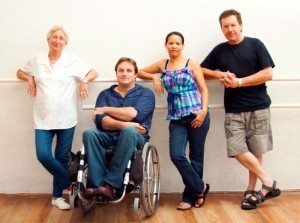 to contend. It is not safe for children to make their own way to classes. Public and private transport is expensive and almost impossible for the poor to use. Distance is another factor. Everything one uses has to be secured so that it cannot be stolen, and insured so that if it is stolen the objects can be replaced. I have had a vehicle stolen from outside my front door; my school has been burgled so many times I have difficulty getting insurance and it is expensive. We have to work with all the doors closed and locked late at night. We also have enormous overheads to maintain everything.
to contend. It is not safe for children to make their own way to classes. Public and private transport is expensive and almost impossible for the poor to use. Distance is another factor. Everything one uses has to be secured so that it cannot be stolen, and insured so that if it is stolen the objects can be replaced. I have had a vehicle stolen from outside my front door; my school has been burgled so many times I have difficulty getting insurance and it is expensive. We have to work with all the doors closed and locked late at night. We also have enormous overheads to maintain everything.
Having read what I have just said above, it sounds very negative and that is definitely not how I feel about my work or my country. It probably is the result of the incredibly high expectations we all had when we took part in our first free democratic election. There was, and there still is, so much goodwill among all our people that to see so many still suffering from sheer grinding poverty is very disturbing.
You have been known to ‘rap’ your corrections in ballet class. I would love to see this on video! How does a teacher engage students patterned by pop culture while instilling an understanding and respect for the classical tradition? What happens when ethnic and cultural differences are added to the mix?
Music is the most amazing of commodities. I have seen very ordinary children with no discernable background in music become enthralled and captivated by Erik Satie’s music as they become familiar with it through the choreography. Much depends on how people are exposed, and the earlier the better. Also how open their minds are to new ideas.
One has to be incredibly aware of everyone’s cultural sensitivities, but if your people trust your personal integrity they will have greater confidence in the artistic aspects as well. My young classes, where there are children from all over Africa attending the school as well as our local children, are extremely vivid and creative when we play improvisational movement games. It is the boys that are totally uninhibited and stimulating to watch as they launch themselves into the heart of the music.
Working with classical training, the choice of music in the ballet class is important and I try to steer clear of music that has too much of a pop beat, otherwise all the hips get seriously active. The greater the musical choices I use in class work, the more sophisticated students’ appetite becomes and the more familiar they become with the unfamiliar.
You have achieved so much, contributed so much, and touched so many lives. What challenges still lie ahead? What’s next for Amy Gould?
Good question. At present, consolidation and streamlining what I have already established is my top priority. The new product to our stable, ImagineMag!, is growing and needs more attention in certain areas. Life is all about change and so is this business. Being sensitive to events that happen around one and constantly adapting to suit emerging needs is essential.
—
Amy’s Dance School: http://amygould.isat.co.za/linksagbs.htm
Imagine Magazine: http://www.imaginemag.co.za/
Theatre On-Main: http://www.theatreonmain.co.za/

July 1, 2012
Dance, Despite All
Jamie Benson on the Art of Not Fitting In
Jamie Benson aims to challenge performance traditions and create accessibly original work as a dancer, choreographer, producer and instructor.
Jamie attended the Dance Department of Cornish College of Fine Art and Spectrum Dance Theater on scholarship—and there any resemblance to Billy Elliot ends. A boundary-pusher and glorious misfit, he observes and explores humanity by placing differing styles of dance into unexpected, and often humorous, everyday landscapes.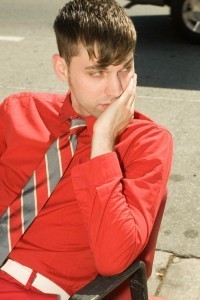
What follows is a candid and personal conversation with Jamie about his life in dance and performance—a life of creative tenacity with which many artists will, no doubt, identify. Welcome, Jamie!
There was not an obvious career path waiting for you when you completed your dance training. In many ways you have made a strength of not fitting in. What has it been like to forge an independent niche for yourself? Do you consider yourself a better dancer for it?
I’m afraid “not fitting in” turned out to be my strength, so I finally embraced it. In dance, unlike other creative professions, fitting in is often a necessity. Only in the last few years have I decided to own my quirky looks and unusual interests, my asymmetry. Obvious career path? Yikes, no. I’ve tried for years to reconcile my jazz baby beginnings with the modern-based technique I first acquired in college. I now, more or less, embody the eternal tension between entertainment value and artistic integrity.
It’s been a long, gruesome road. I’ve sort of given up on dance a couple of times only to end up immersed in it all the same. The process has made me a better performer, certainly. The struggles I’ve endured being my own Producer, Choreographer, Public Relations Rep and Development Director add a lot of weight, I think, to my performances—even when they’re humor-heavy. I’ve heard it said that the comedians with the most painful backgrounds end up being the funniest.
Plus, after some significant successes with regard to my development and marketing efforts, I’ve started getting work helping others with it. That is very fulfilling also. Now, if I just had a little more time and money to do my own work, I’d be set.
Ballet formed the cornerstone of your training. Traditionally, ballerinas and danseurs and their instructors and choreographers have remained faithful to rules laid down centuries ago. As a choreographer you freely pair classic and barbaric dance forms. Is there anything about ballet—technically, thematically, spiritually—that you hold sacred? By adding an element of barbarism to ballet, what is gained? How do you know when you have gone too far?
Germaine, this is a stellar question. Ballet is a crucial expressive form. It embodies many of the structures we as choreographers use to tell a story or express a feeling. Because the rules can be so stringent in its purist form, ballet can get stuck in the past. It’s loads of fun to take ballet class. There is a sense of history, pure elegance and a wonderful longing to defy reality with beauty.
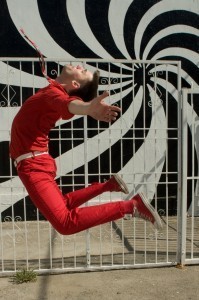 Having typed that, I love using ballet in my own work as a representation for the aristocracy, or the pretense we present to the world. When a ballerina loses her lift, her steel-like structure, her refined magnificence, it offers so much in terms of drama and metaphor. Who hasn’t, while trying so hard to stay tall, keep it together, lost that will to present strength and beauty? As someone who loves all things outlandish or “campy” I feel I’ve never gone too far with this (although I suspect I’ve gotten close). As long as I find a sense authenticity in the narrative I’m creating, I feel on the right track. The work has to be grounded in some definitive truth. I find great delight in placing highbrow and lowbrow themes next to each other. I walk the line where they meet in an attempt to break new ground in dance. Ballet is a respected part of that process.
Having typed that, I love using ballet in my own work as a representation for the aristocracy, or the pretense we present to the world. When a ballerina loses her lift, her steel-like structure, her refined magnificence, it offers so much in terms of drama and metaphor. Who hasn’t, while trying so hard to stay tall, keep it together, lost that will to present strength and beauty? As someone who loves all things outlandish or “campy” I feel I’ve never gone too far with this (although I suspect I’ve gotten close). As long as I find a sense authenticity in the narrative I’m creating, I feel on the right track. The work has to be grounded in some definitive truth. I find great delight in placing highbrow and lowbrow themes next to each other. I walk the line where they meet in an attempt to break new ground in dance. Ballet is a respected part of that process.
Your marriage, about which you created a performance piece, attests to the power, not only of love, but also creative synergy. In what ways has your marriage contributed to your development as an artist?
Wow, I’ve gained so much from my relationship with Andrae Gonzalo. He, being the consummate visual artist and fashion designer, helped push me back into dance during one of my hiatuses. Much of my work has been collaboration with him. His deep love and knowledge of theater has helped to inform the work also. Our tastes are just similar enough to share a stage and yet different enough to keep us frustrated, challenged. Not to mention the fact that his ability to innovate the costuming is really awe-inspiring. HEAR THIS CHOREOGRAPHERS: Please put more thought into your costumes. They propel the work to new conceptual/aesthetic heights. The costumes, along with your choreography, further enable an audience to suspend their disbelief & be taken away with your work.
The life of any artist seems to hold its own unique interplay of agony and ecstasy. How would you describe yours?
Wow again. Let’s be frank. Money and looks have been a source of a lot of turmoil for me as a dancer. The cost to continue consistently training, alongside the pathetic rates dancers get to perform, has frustrated and derailed me a few times. I’ve noticed other dancers from wealthier families excel in a more seamless way. I’ve worked three odd jobs simultaneously at any given time my entire adult life. Although the employment I have now is both more fulfilling and pays better, I’m still juggling part-time gigs. I’ve spent much of my best dancing years scrambling to pay rent. That has an emotional and physical toll. It’s tricky, although dance is a high-minded art form, it’s also a aesthetically-based performance form. In many dance forms, women are often supposed to look lithe, thin and sexy whereas men broad, strong, a heartthrob. I’m afraid I did not fit the bill often—being told over and over that I was “too skinny” or “too quirky” to the point where I developed a complex about it. Of course, I always intended to make more time & room in the budget for a gym membership and personal trainer, but it wasn’t possible during my younger years.
That being said, I’ve created the kind of work that I want to see and, I’m told, doesn’t exist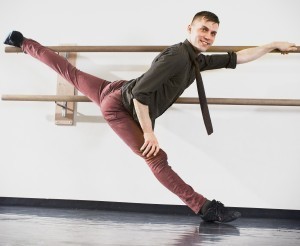 anywhere else. That is a satisfaction reserved for very, very few. I’m deeply grateful to continue to pull that off. Being able to create a platform uniquely your own and have people relate to it is so much more exhilarating than being the third dancing Disney Chipmunk to the left. Because I’ve been able to produce work that I love before, I truly believe in my ability to manifest this joy again and have every intention to do so.
anywhere else. That is a satisfaction reserved for very, very few. I’m deeply grateful to continue to pull that off. Being able to create a platform uniquely your own and have people relate to it is so much more exhilarating than being the third dancing Disney Chipmunk to the left. Because I’ve been able to produce work that I love before, I truly believe in my ability to manifest this joy again and have every intention to do so.
In addition to your very busy life as a performer, choreographer and producer, you also teach. What do you strive to pass on to your pupils that your instructors never taught you?
Not to be too self-critical! It’s tough to stare at yourself in a mirror and be told you aren’t doing things right for a whole class at a time. Humor is also a major factor in my approach to teaching. I’m quick to acknowledge the mistakes I make in class or to share mistakes that I used to make if a student is having a similar problem. It disarms the students and gives them wiggle room to grow without unnecessary drama.
What is next for Jamie Benson? What else would you like to share with our readers?
I actually have a big announcement, Germaine, and would love to reveal it here! I just accepted a job from dance presenter White Bird to be the Rehearsal Director for Le Grand Continental, a groundbreaking work by internationally renowned, Montreal-based choreographer, Sylvain Emard. I’m responsible for teaching a diverse group of 200 Oregonians a 30-minute contemporary line dance. I’ll help organize the event, lead rehearsals, and perform with those selected. This is the same performance series I’ve been working on in New York as an assistant, and it was a rather profound experience. While in New York, It was inspiring to witness the work become about far more then learning a series of movements. This event is absent of ego (almost any age, weight, or experience level can do it) and uses dance as a common denominator to bring a broad community together. Le Grand Continental has been traveling around the world, and I am thoroughly grateful to be a part of both the New York and Portland versions of it. Check the video trailer out and see for yourself.
I look forward to sharing more exciting dance stories with you all again!
jamiebenson.com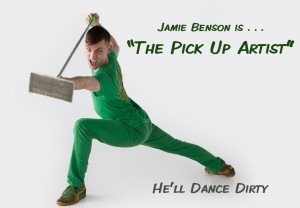
youtube.com/jamiebenson
facebook.com/jamiejbenson
linkedin.com/jamiejbenson
twitter.com/#!/jamiebenson
"Insightful & Irreverent"
- Ann Haskins, LA Weekly

May 15, 2012
Creating Beauty
An Interview With Elana Altman
Grace. Strength. Self-discipline. Elana Altman embodies these traits, applies effort, and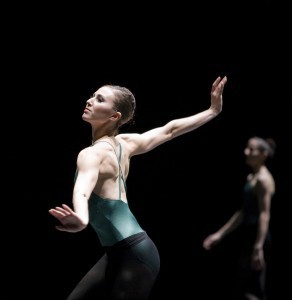 creates beauty—a beauty unique to her chosen dance form, ballet.
creates beauty—a beauty unique to her chosen dance form, ballet.
A native of San Francisco, Elana trained at the San Francisco Ballet School before being named apprentice in 2000. She joined the Company a year later and was promoted to soloist in 2005. She has danced a variety of roles including Myrtha in Tomasson’s Giselle, the Lilac Fairy in Tomasson’s The Sleeping Beauty, the Sugar Plum Fairy and the Snow Queen in Tomasson’s Nutcracker, and Mercedes in Tomasson/ Possokhov’s Don Quixote. Welcome, Elana!
Many girls dream of becoming ballerinas; few do. You joined the San Francisco Ballet at the age of 17 and ascended rapidly through the ranks to become a soloist dancer at the age of 22. What is it about ballet that first attracted you? What continues to inspire your devotion?
I was first attracted to ballet after seeing the Nutcracker at age 3. A family friend took me backstage to see the costumes and I actually remember loving the vivid colors and behind-the-scenes magic. When I first got to taste the stage myself, I was hooked. That is what continues to inspire me: I love performing and feeling the energy from the audience.
You have danced such iconic roles as the Firebird and the Snow Queen. To what extent do you “become” the characters you dance? How do you know when you have given a convincing, or even magical, performance?
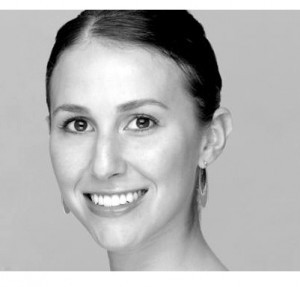 I listen to the music and mold my body to the choreography. In Firebird, for instance, both the music and the choreography tell the story so vividly. I try to find the nuances there to enhance it. I also prepare by knowing the story inside-out and what the Firebird would be feeling at every moment. If I feel good when the curtain goes down, then I’ve convinced myself!
I listen to the music and mold my body to the choreography. In Firebird, for instance, both the music and the choreography tell the story so vividly. I try to find the nuances there to enhance it. I also prepare by knowing the story inside-out and what the Firebird would be feeling at every moment. If I feel good when the curtain goes down, then I’ve convinced myself!
Why did you choose classical ballet over more popular dance forms? What does ballet have to contribute in spirit and substance to post-modern culture? Has it a future?
I didn’t really choose. I was good at it and it felt the best, so it stuck. I didn’t have much exposure to other forms, unfortunately. Each dance form has something special to contribute. Ballet strives to make the most difficult task look effortless. But ballet is changing, broadening, and I look forward to seeing where it goes. In order to have a future, it needs to grip younger audiences.
You have fulfilled your dream of becoming a ballerina and have earned world renown. What other dreams, if any, have you had to place “on hold?”
I feel extremely fortunate to have fulfilled this dream. I have not put anything on hold. I still have many years after I’m done dancing for my other dreams.
You have said that dancers “create beauty though effort.” How would you describe ballet’s unique beauty, and what makes you willing to exert that effort?
There is an aesthetic to ballet that is completely unique. In certain sports, we can see the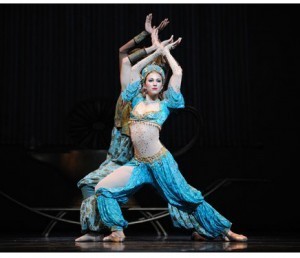 body and marvel in its glory. Ballet bodies must fit a specific mold, and in doing so, create beauty and emotion in everything they do. The muscles in the arm can convey wings; the articulation of a foot can make someone cry; the turn of a shoulder can be felt from the last row of the very top balcony. Ballet has sport-like qualities, but it is the art of finessing it all that gives it its power. I exert myself in order to have that effect on someone in the last row of the balcony.
body and marvel in its glory. Ballet bodies must fit a specific mold, and in doing so, create beauty and emotion in everything they do. The muscles in the arm can convey wings; the articulation of a foot can make someone cry; the turn of a shoulder can be felt from the last row of the very top balcony. Ballet has sport-like qualities, but it is the art of finessing it all that gives it its power. I exert myself in order to have that effect on someone in the last row of the balcony.
You were among the first readers of my novel You, Fascinating You, which tells the story of a ballerina from another era. To what extent could you relate to the novel’s protagonist? What has stayed with you about her story?
I could relate in her devotion to the art, especially in the early years. I still marvel in her courage, tenacity, and the strength of her love.
What lies ahead for Elana Altman?
I’m excited to dance another season with San Francisco Ballet, including tours to London and Washington DC. I’m also delighted to be getting more involved with SF Ballet School, my alma mater, and giving back as much as I can.
© photos courtesy of San Francisco Ballet
“From the time she started to move, Elana Altman commanded the stage with expansive movement, driving the focus through her and shaping the role to the final climax.” Ballet Alert!

April 24, 2012
Out From the Shadow of the Great Nijinsky
An Interview with Kinga Nijinsky Gaspers
All artists struggle to forge a unique identity; few bear the surname Nijinsky.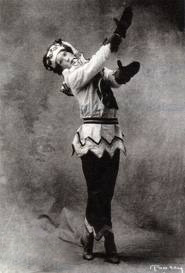
Kinga Nijinsky Gaspers, granddaughter of legendary danseur Vaslav and his maligned wife Romola, tried for many years to ignore her famous (and equally infamous) lineage. For much of her life, she slept with her grandfather’s dancing costumes shut away in a box beneath her bed. Until one day she opened the box and watched a young dancer reverently caress each garment.
Unable to escape history, Kinga set out to correct, what she sees as, its distortions and to rescue her family’s memory from the grasp of historians, filmmakers and journalists who stand to profit from sensationalizing it.
I met Kinga through mutual friend Howard Allen (aka “the Script Doctor”). Their pairing suggests that the ultimate revision will find its audience via the Big Screen. I for one look forward to it. Welcome, Kinga!
You have played piano professionally, acted a one-woman play, and authored a book. You are also the granddaughter of the legendary danseur, Vaslav Nijinsky. What was it like to grow up in the shadow of so famous a personage—and how has being a Nijinsky influenced your development as an artist?
Thank you for calling me an artist. For a long time, I did not consider myself one. Growing up in Communist Hungary, I knew nothing about my grandfather Nijinsky; however, I was very proud of my father, Miklos Szakast, a well-known and talented actor in Hungary. It was his example, nurturing and inspiration that led me to who I am today. When I first discovered the connection to Nijinsky, I was miffed. I wanted a life and accomplishments of my own, not through accident of birth. As I grew up, matured, I realized that I had been given a mission, a mission to pick up where my grandmother Romola left off and to continue spreading my grandfather’s legacy.
Your grandmother, Romola Nijinsky, has been depicted as a figure of little importance apart from her association with the great Vaslav. Who, in truth, was Romola? 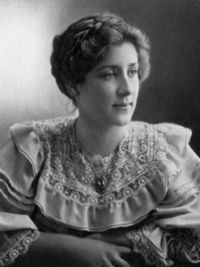
Romola Pulszky was an amazing woman of the 20th century. The first truly liberated woman. She was cultured, educated, and a speaker of many languages, but most of all, the one and only person of her time who truly understood and appreciated Nijinsky’s art and soul. She loved him unconditionally, and stood by him in sickness and in health, and beyond the grave.
You spent years researching your grandparents’ extensive U.S. tour with the Ballets Russes. Why did you choose to focus on that particular leg of their life journey?
The search began with the fascination of a handwritten itinerary of the tour, left to me by my grandmother. Since I live in the US and am a proud American citizen, I wished to know more about how the America of the 1910s received this very exciting and unusual troupe of artists.
What childhood memories do you cherish of your grandparents? What were they like off-stage?
Sadly, I did not know my grandfather. My grandmother, Romola, I respected, admired and was a bit afraid of. I got to know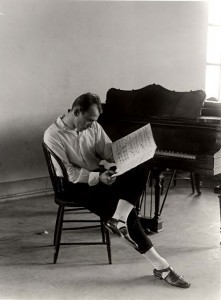 her well when preparing for my one-woman show, Mme. Nijinsky: Married to a God, written by my dear friend, Terry Earp. Thanks to her vision and understanding of Nijinsky’s wife, I met my grandmother, onstage and off.
her well when preparing for my one-woman show, Mme. Nijinsky: Married to a God, written by my dear friend, Terry Earp. Thanks to her vision and understanding of Nijinsky’s wife, I met my grandmother, onstage and off.
You were among the first readers of You, Fascinating You and called the novel, “A story reminiscent of that of my grandparents.” What was it about the book that evoked your family history?
The book evoked my childhood following WWII, growing up in Budapest; the places, the names in the dance and theater world were so very familiar to me. I saw the story unfold in front of my eyes. I understood the suffering that millions shared because of the horrors of war, and understood my grandfather Nijinsky, who was so affected by man’s inhumanity to man that he withdrew from the world.
What is next for Kinga Nijinsky Gaspers?
Next is a film project about the Nijinskys.
If you have enjoyed this interview, check back soon for posts featuring soloist dancer Elana Altman, danseur/choreographer Jamie Benson, and others.
“Nijinsky dancing was as wistful as a voice in the dark…” The Body of the Artist, Meg Sperling

April 8, 2012
Life After Les Sylphides
An Interview with Georgia Reed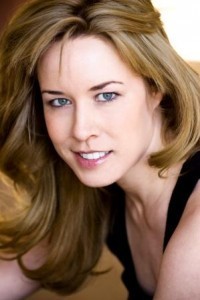
Whether leaping across a stage or playing a tough-girl role, Georgia Reed embodies grace, heart and a love of art and audience. In the short time I have been privileged to share Georgia’s journey, I have watched her go from strength to strength in a string of starring roles that has drawn upon her multiple talents as a dancer, actress and singer. In true Superwoman fashion, she also produces and writes for the screen. The following interview follows a rising star from the classical stage to the popular, from New York to Hollywood. Welcome, Georgia!
You trained from an early age as a ballerina and spent many years dancing with ballet companies. What was the most rewarding aspect of being a ballerina? What challenges did you face?
The most rewarding aspect of being a ballerina, for me, was the opportunity to dance on various stages to some of the most beautiful music I’ve ever heard, and to share my interpretation of the music and the movement with a live audience. There were moments it was just me and the audience breathing in and out together—you can feel that as a dancer, when the audience is really connected to what’s happening on stage. Sometimes it feels like I have become the music and my body is simply the paint with which the music is creating a picture for the audience. It’s thrilling. The challenges as a ballerina are endless! Every day, striving to increase perfection of skill, extension, turns, grace, timing, presence… It is a never-ending journey of self-improvement. And, when I felt tired, injured, alone and/or frustrated, as a professional I was expected to show up and do the work regardless of personal problems—as in any job, I expect, but, of course, a ballerina must do it in a tutu and pointe shoes.
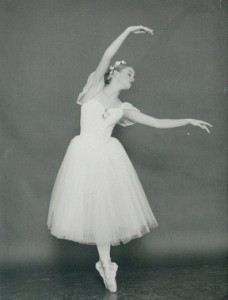 What made you decide to transition to acting? In what ways did ballet prepare you to be an actress?
What made you decide to transition to acting? In what ways did ballet prepare you to be an actress?
I have loved acting, and singing for that matter, all my life, at the same time I loved dancing. However, it was impressed upon me at a young age that if I wanted to succeed in ballet, I would need to make a choice between the three loves, and focus on one. Since it seemed like acting and singing were things I could do when I was 90, I chose ballet as my focus. This was when I was about 12 years old. A year or two later, I had one of the soloist roles in the pre-professional dance company’s production of Les Sylphides (to this day my favorite ballet) and the role was a validation of my decision. When I sustained a serious foot injury at 19, while under contract with a company, I kept dancing anyway (as all professionals do), and ended up in New York City, where I think I finally burned out. Also, throughout my career in dance, I was always more interested in the motivations behind the movement—if I was performing a character, such as Giselle, I wanted to know why she fell for Albrecht, why she died, and even wrote diaries in character. This was the beginning of acting for me. So, living in New York City, burned out on ballet, and feeling like I was in a space where I could make some new choices, I decided to start training in acting and singing once again. Eventually I was able to return to dancing as well, for which I am very grateful. Ballet is not just about being skinny and having a high extension; there is passion, and feeling, and emotion to be expressed in the movement. These qualities are equally important in acting, and in any artistic endeavor, I think.
What was it like to move from the classical stage to the popular? From New York to Hollywood?
It’s fascinating—both genres, both cities, are wonderful in their own way—and they each have their own set of rules. Of course, the only real rule is that there are no rules in creating art, in making a career path. Commercial work versus theatrical work? In the end, it all has to come from an authentic place. If the TV show/play/film/song/car advertisement feels phony to the viewer, then it doesn’t work. At least, that’s what I’ve noticed. I love to switch between stage and screen. It’s like a tight rope, and there are always new challenges. I guess being raised in the world of ballet has conditioned me to crave constant challenge and change.
You and I first met through our shared interest in film. What draws you to the screen, and what do you aspire to achieve in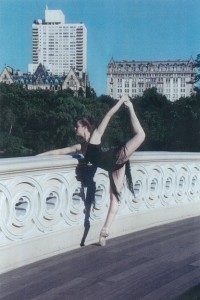 film and/or television?
film and/or television?
Film and television affords us the opportunity to get really up close and personal with the story. As an actor, the camera catches every nuance of your character work. It’s like using a scalpel instead of an axe: the fine details of the character are brought out through the eye of the camera. This kind of deceptively simplistic work draws me to the screen. I aspire to do great work like my film idols—Meryl Streep, Glenn Close, Cate Blanchett, Ellen Burstyn, Ian McKellan, Gary Oldman, Kevin Kline… to name a few. But my hope is to find my own voice and do work that will inspire and entertain audiences just as the amazing actors I just mentioned have inspired and entertained me. I really hope to work right up until the day I die!
You are currently working on a book. Would you like to share a “sneak preview” with our readers?
My personal experience as a dancer may be a story that is not uncommon in the world of ballet, but something keeps telling me to share it in writing. Ballet had such a big influence on my life, almost like a second religion, or a second set of parents, and the more space I get between myself and those years of day-in-day-out dancing, the more perspective I have on the whole situation. The funny thing is, out of all the dancers I with whom I trained, there were so many other girls who were more talented, skinnier, received the scholarships, etc., and yet very few went pro. I feel lucky to be able to continue to dance today and hope that my story will be a sort of inspiration, or perhaps catharsis, to others when they read it.
You were among the first performing artists to read my novel You, Fascinating You, which tells the story of a ballerina from another era. To what extent were you able to relate to the book’s protagonist Margit Wolf? What has stayed with you about her story?
Oh, the book was something that affected me on many levels. Margit had aspirations like many young dancers, and she made it so far toward her dreams. Of course, it was never enough. I don’t know if there are dancers out there who feel like it will ever be enough, that they’ve “arrived.” But Margit made the choice of love over career—this is something I struggled with even as a teenager, when my friends were going to prom and I was going to rehearsal. When Margit was betrayed by this choice, left alone to raise a son and die after barely surviving the war, it was heartbreaking. I think anyone who has ever had a dream and wondered whether they made the right decisions in life will connect with this book. And they say love conquers all—but in this case, does it? Was Margit’s love for ballet the choice she should have made over her love for Pasquale?
What’s next for Georgia Reed? Is there anything else you would like to share with our readers?
My goal is to continue to act, sing, and dance both on stage and on screen, and to create art that inspires and entertains. My website http://www.georgiareed.com is a great place to find out about what I’m currently working on, and I encourage anyone interested in learning more to contact me.
Thank you, Georgia. Watch this blog for upcoming interviews with soloist dancer Elana Altman of the San Francisco Ballet and Kinga Nijinsky Gaspers, granddaughter of the legendary Vaslav and an artist in her own right.

March 24, 2012
The Son
Cesare Frustaci Remembers “You, Fascinating You”
I have known Cesare Frustaci since the late 1980s, yet only now, after years of researching his family history, can I begin to fathom his prickly fortitude. I suppose we love each other, though we are more apt to spar than to stroke.
In this interview Cesare takes us “backstage,” where his childhood unfolded and air raids were as common as curtain calls.
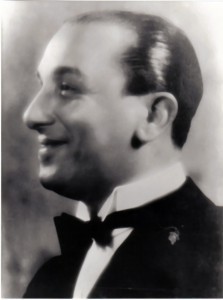
The composer as a young man
1) You had an unusual childhood. Not only were you the son of two performing artists, but you learned at a tender age what it is like to endure separation, persecution, hunger… How has your early life made you the person you are today?
I inherited my mother’s discipline, perseverance and determination along with with my father’s inventive and Bohemian talent and lifestyle. The word “impossible” never entered my vocabulary. In my life everything was difficult, nothing impossible.
I grew up in theaters’ backstages and dressing rooms. At an early age I learned the adage, “The show must go on.”
Circumstances of my childhood—such as finding myself alone on the streets during WWII—forced me to develop a rapid decision-making process. I question manmade rules and frequently do not follow them. I decide by myself what to do and, above all, what not to do.
2) When did you first begin to research your parents’ story—and what prompted you to undertake this labor of love?
My mother never spoke about the horrors she endured as a Jew under fascism, but late in life she suffered nightmarish hallucinations. At her deathbed I found 13 love letters from my father that she somehow managed to save from the ravages of war. They spoke to my heart and awakened my desire to know the whole truth.
3) You met author Germaine Shames more than twenty years ago. What do you recall about that meeting?
She was a very attractive young woman, and an opinionated one. She bombarded me with questions and seemed to take a genuine interest in my stories. Twenty years later, my wife Judy encouraged me to write my stories down. I remembered the writer I had met so long before—a woman, a Jew, a feminist. Who could have been better suited to understand my mother and to feel the gravity of events that threatened to crush her spirit?
4) You were baptized and raised a Roman Catholic, yet your mother was Jewish. How has your interfaith background affected your life and beliefs?
When I was six or seven years old, on Fridays and Saturdays I went with my Orthodox Jewish friend Alex to the synagogue, and on Sundays my mother took me to the Catholic Church where I was an altar boy. I consider myself a genuine Roman Catholic Jew.
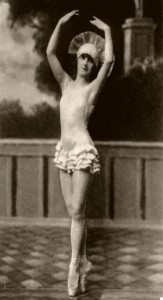
The ballerina in training at the Budapest Opera
5) Your father was a talented conductor and composer. “Tu Solamente Tu” (later to become “You, Fascinating You”) is the song for which he is most remembered. Why this song? What is its power?
“Tu Solamente Tu” is a very mellifluous, easy-to-remember melody with touching lyrics by Michele Galdieri.
Your book defines the song as “a universal anthem to longing.” The magic of “Tu Solamente Tu” or “You, Fascinating You” or “Du Immer Wieder Du” is exactly that. The world is full of longing, and this song expresses that longing in a melodic and memorable way.
6) The biographical novel You, Fascinating You reveals intimate details of your family history. How does it feel to be the subject of a book? What do you hope readers will glean from your parents’ story?
History generally repeats itself. We witness this phenomenon every day.
Holocaust deniers are addressing young generations to plant the seed of doubt in their minds. I hope that my eyewitness story and my parents’ stories will reach young people and will act as an antidote to the venom of this neo-Nazi throng.
The Holocaust claimed eleven million victims—Jews, Gypsies, handicapped, homosexuals, Catholic priests, and nearly everyone opposing the Nazi’s actions. In memory of those innocent children, mothers, fathers, and elderly I cannot and will not keep my mouth shut. My sixty-year silence is over.
Cesare Frustaci has made a mission of sharing his story and insights at schools, churches, and synagogues around the world. If you would like Cesare to speak with your group, email him at cesarefrustaci@msn.com.
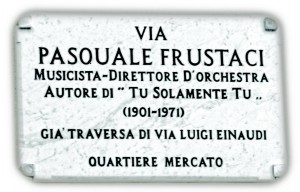 Enjoy this Recent Article about Cesare.
Enjoy this Recent Article about Cesare.

March 14, 2012
Ballet Chooses the Dancer
I was four years old, a wisp of a dancer in an itchy tutu, taking ballet classes with a teacher whom, my parents liked to boast, had studied under Martha Graham. Like other young girls, I dreamed of becoming a prima ballerina.
But I was not like most other girls. Shy, stubborn, I balked at following choreography and often found myself stranded alone on one side of the studio while the class, moving as one body, occupied the opposite side. And then suddenly, before I had mastered a single step, it was time for my first recital. A chorus line of us baby ballerinas was positioned center-stage as the towering velvet curtain slowly, slowly opened. One look at the audience and I froze, mouth wide-open, hands clamped to my cheeks.
My parents removed me from ballet class and enrolled me again thee years later—with similar results. There would be no more recitals. I moved on to other interests and other dreams, taking with me what little knowledge and grace I had managed to acquire.
Flash forward half a century…
I have ripened into, not a ballerina, but a writer with abiding creative and emotional ties to dance and dancers. My forthcoming novel, You, Fascinating You, the story of a forgotten ballerina who inspired a timeless love song, will be released within weeks.
Throughout the process of writing the book and preparing to launch it, I have been humbled again and again by the generosity of the ballet community. Russian danseur Stanislav Belyaevsky gifted me with the book’s exquisite cover image. Ballerinas Susan Jaffe, Janet Panetta, and Elana Altman read the book and offered cover blurbs, as did the granddaughter of the legendary Vaslav Nijinsky, Kinga Nijinsky Gaspers.
This outpouring of goodwill has been both gratifying and bittersweet. What earthly Nirvana of camaraderie did I walk away from when I flung my leotard into a drawer and resigned myself to a lifetime of klutziness? Could I have tried harder?
The protagonist of my novel, Margit Wolf, begins the account of her life, “They say ballet chooses the dancer.” Regrettably, I was not among the chosen. How I envy those who are!
Germaine Shames' Blog
- Germaine Shames's profile
- 10 followers


